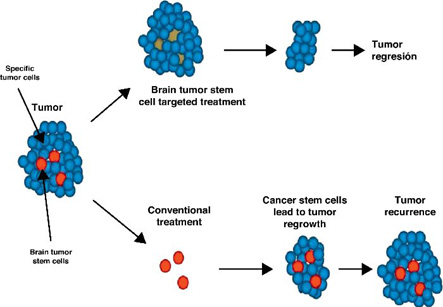Cancer
Introduction
In a typical stem cell transplant very high doses of chemotherapy drugs are used, often along with radiation therapy, to try to destroy all of the cancer cells. This treatment also kills the normal stem cells in the bone marrow. Soon after treatment, stem cells are given to the patient for replacement of cells which were destroyed. These stem cells are given into a vein (intravenously), much like a blood transfusion. Over time these cells settle in the bone marrow and begin to grow and make healthy blood cells. This process is called as engraftment.
There are 3 basic types of transplants
They are named based on where the stem cells come from (the origin of stem cells)
• Autologous – the cells taken from the same patient
• Allogeneic – the cells come from a matched related or unrelated donor
• Syngeneic – the cells taken from the identical twin or triplet
Iranian scientists have moved to the forefront in embryonic stem cell research, according to a recent joint study by Harvard University and the Massachusetts Institute of Technology

Autologous stem cell transplant
In this type of transplant, the stem cells are taken before undergoing cancer treatment which destroys them. The stem cells are removed, or harvested, from either the bone marrow or blood and then frozen. After getting treated with high doses of chemotherapy or radiation, the stem cells are again thawed and given back to the patient intravenously.
One advantage of autologous stem cell transplant is that the patient is getting his or her own cells back. This means that there is no risk of the immune system rejecting the transplant or that the transplanted cells will attack the normal body cells.
One advantage of autologous stem cell transplant is that the patient is getting his or her own cells back.
A possible disadvantage of this method is that cancer cells may be harvested along with the stem cells and then put back into the body. To prevent this, doctors may give anti-cancer drugs to the patient or treat the stem cells with other methods to reduce the number of cancer cells present at the time of harvesting. Another disadvantage is that there is still the same immune system when the stem cells engraft. The cancer cells were able to grow in the presence of the immune cells before, and may be able to do so again.
This kind of transplant is mainly used for treatment of leukemias, lymphomas, and multiple myeloma. It is sometimes used for other cancers, such as testicular cancer, neuroblastoma, and certain cancers in children. Doctors are looking at how autologous transplants might be used to treat other diseases, such as systemic sclerosis, multiple sclerosis, Crohn disease, and systemic lupus erythematosis.
Allogeneic stem cell transplant
In this type of transplant, the stem cells are not harvested from the patient, but from a donor whose tissue type closely matches the patient. (This matching is called as “HLA matching”). The donor is often a family member, usually a brother or sister. If there is no good match in the family, a donor might be found from the general public through a national registry database. This is sometimes called as MUD (matched unrelated donor) transplant.
Syngeneic stem cell transplant
This is a special kind of allogeneic transplant which can only be tried when the recipient has an identical twin or identical triplet donor. Therefore, the donor always has the same tissue type. An advantage of syngeneic stem cell transplant is that graft-versus-host disease is not a problem. Also, there are no cancer cells in the transplant as in case of an autologous transplant. A disadvantage is that this type of transplant cannot destroy any remaining cancer cells because the new immune system is very much like the recipient’s immune system. Every effort must be made to destroy all the cancer cells before the transplant to prevent the cancer from relapsing.